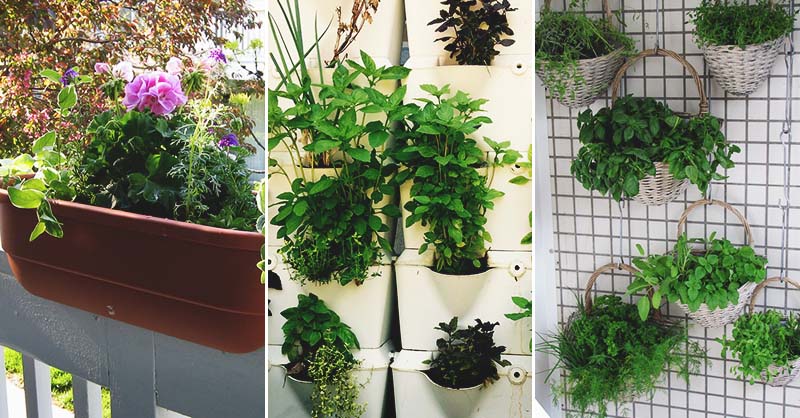Imagine having a lush, vibrant herb garden right at your fingertips, ready to enhance the flavors of your favorite dishes. With a vertical herb garden, you can bring the beauty and convenience of fresh herbs into your home. Whether you have limited space or simply want to add a touch of greenery to your kitchen, a vertical herb garden is the perfect solution. Say goodbye to grocery store herbs that quickly wilt and lose their flavor. With this innovative gardening method, you can harvest your own herbs whenever you need them, ensuring the freshest and most flavorful ingredients for your culinary creations. Get ready to elevate your cooking game with a vertical herb garden!
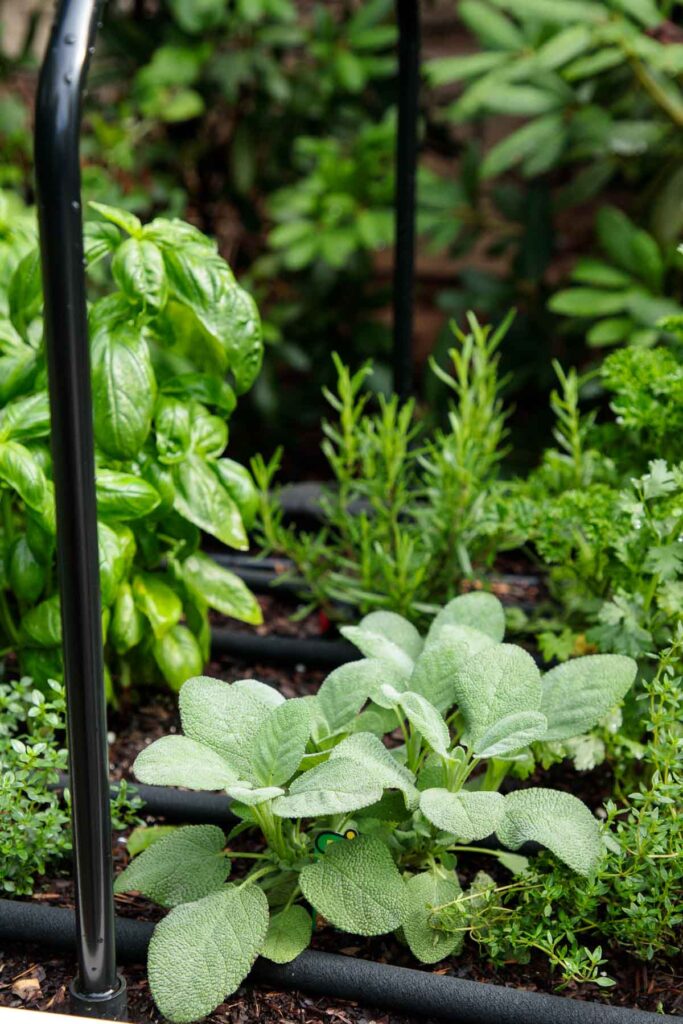
This image is property of thecafesucrefarine.com.
Benefits of a Vertical Herb Garden
Utilize Small Spaces
One of the major advantages of a vertical herb garden is its ability to utilize small spaces effectively. Whether you live in a small apartment with limited floor space or have a cramped balcony or patio, a vertical garden allows you to make use of vertical space that would otherwise go unused. By growing your herbs in a vertical arrangement, you can maximize your growing area while still having enough space for other activities.
Easy Access to Fresh Herbs
With a vertical herb garden, you will have easy access to fresh herbs right at your fingertips. No longer will you need to run to the grocery store every time you need some basil or mint for your culinary creations. Instead, you can simply step outside and pluck the herbs you need directly from your garden. This convenience not only saves you time and energy, but it also ensures that you always have access to the freshest herbs, enhancing the flavor of your dishes.
Enhances Visual Appeal
In addition to its practical benefits, a vertical herb garden also enhances the visual appeal of your living space. The lush green foliage of the herbs cascading down the wall or hanging in containers can add a touch of natural beauty to any setting. Whether you choose to create a vertical garden indoors or outdoors, it is sure to catch the attention of your guests and become a visual centerpiece in your home.
Saves Time and Money
Growing your own herbs in a vertical garden can save you both time and money in the long run. Instead of purchasing expensive packaged herbs from the grocery store, you can grow your own at a fraction of the cost. Additionally, you won’t have to spend time and effort searching for specific herbs or waiting in line at the store. By having a ready supply of fresh herbs at home, you can reduce your reliance on store-bought herbs and enjoy the satisfaction of growing your own food.
Reduces Pests and Diseases
Vertical herb gardens can also help in reducing pests and diseases that commonly affect plants. Elevated off the ground, the herbs are less susceptible to soil-borne pests and fungal infections. Additionally, proper spacing and airflow between the plants in a vertical garden can minimize the risk of diseases spreading among them. By taking advantage of the vertical growth patterns, you can create an environment that is less conducive to pest infestations and diseases, leading to healthier and more productive herb plants.
Choosing the Right Location
Amount of Sunlight
When choosing the location for your vertical herb garden, it is essential to consider the amount of sunlight your herbs will receive. Most herbs thrive in full sun, which typically means at least six hours of direct sunlight per day. However, some herbs, such as mint and parsley, can tolerate partial shade. Assess the sunlight exposure in different areas of your home or outdoor space to determine the best location for your vertical herb garden.
Available Space
Another factor to consider when selecting the location is the available space. Measure the dimensions of the area where you intend to install your vertical garden to ensure that it can accommodate the desired number of herb plants. Keep in mind that some herbs, like basil and rosemary, can grow quite large, so plan accordingly and allow enough space for each plant to flourish.
Protection from the Elements
While herbs generally enjoy outdoor conditions, it is essential to consider the protection your vertical garden will have from the elements. Excessive wind, extreme heat, or heavy rainfall can have a detrimental effect on herb plants. If your chosen location is exposed to harsh weather conditions, consider incorporating a shelter or a cover to shield your plants and provide them with the necessary protection.
Accessibility
Lastly, consider the accessibility of your vertical herb garden. Ensure that it is conveniently located for regular maintenance, harvesting, and watering. If the garden will be placed in an outdoor setting, make sure it is easily accessible from your kitchen or cooking area, so you can quickly grab fresh herbs while preparing meals. Keep in mind that the more accessible the garden is, the more likely you are to use and enjoy its benefits.
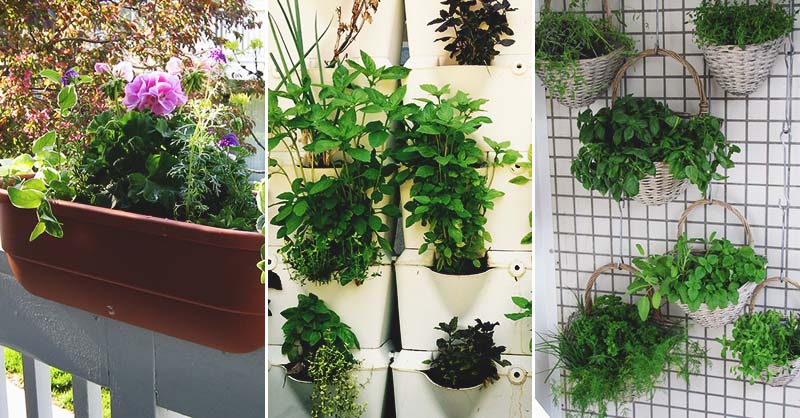
This image is property of morningchores.com.
Selecting the Best Herbs
Consider Growth Characteristics
When selecting herbs for your vertical garden, consider their growth characteristics. Some herbs, like mint and lemon balm, have a tendency to spread rapidly and can quickly overcrowd other plants if not properly contained. On the other hand, certain herbs, such as dill and cilantro, have a limited lifespan and bolt quickly, so they may need to be replanted frequently. Understanding the growth habits of different herbs will help you choose the ones that are best suited for your vertical garden and ensure optimal growth and productivity.
Herbs for Culinary Uses
One of the primary purposes of a vertical herb garden is to provide fresh herbs for culinary uses. When selecting herbs for this purpose, consider the ones that you use most frequently in your cooking. Popular culinary herbs include basil, parsley, rosemary, thyme, and sage. These herbs not only add delightful flavors to various dishes but also provide numerous health benefits.
Herbs for Medicinal Purposes
In addition to culinary herbs, you may also want to consider growing herbs for medicinal purposes. Herbs such as chamomile, lavender, and peppermint have long been used for their therapeutic properties. Research the medicinal properties of different herbs and choose the ones that align with your specific health needs or interests. Remember to consult a healthcare professional before using herbs for medicinal purposes.
Combining Herbs for Optimal Growth
When selecting herbs for your vertical garden, consider combining different herbs with complementary growth requirements. For example, rosemary and lavender are both drought-tolerant herbs that thrive in well-drained soil and full sun. By planting these herbs together, you can create a harmonious arrangement that optimizes space and ensures that all plants receive the conditions they need to thrive.
Materials and Tools Needed
Vertical Planters or Containers
To create a vertical herb garden, you will need suitable planters or containers that can be mounted on a wall or hung in a vertical arrangement. These containers should have adequate drainage holes to prevent waterlogging and ensure proper air circulation around the plant roots. You can choose from a wide range of options, including pocket planters, stacked planters, or even repurposed materials such as wooden pallets or hanging shoe organizers.
Support Structures
A sturdy support structure is essential for the success of a vertical herb garden. Depending on the design of your vertical garden, you may need to install wall brackets, trellises, or hanging hooks to secure and support the planters or containers. It is important to ensure that the chosen support structure is capable of withstanding the weight of the plants and the containers, especially when using heavier materials such as clay pots.
Potting Soil and Fertilizers
Using high-quality potting soil is crucial for the health and productivity of your herb plants. Choose a well-draining potting mix that is enriched with organic matter and essential nutrients. Herbs generally do not require excessive fertilization, but a slow-release organic fertilizer or compost can be beneficial to provide them with a nutrient boost throughout the growing season. Follow the instructions on the fertilizer package for the appropriate application rates and frequency.
Watering Systems
Proper watering is vital for the success of any herb garden, including a vertical one. Depending on the size of your vertical herb garden and your specific needs, you can choose between manual watering with a watering can or a drip irrigation system. If opting for a drip irrigation system, ensure that it is compatible with the containers or planters you have chosen and that it provides even moisture distribution throughout the garden.
Hand tools (trowel, pruners, etc.)
To maintain your vertical herb garden, you will need a few basic hand tools. A trowel or a small garden spade will come in handy for planting and transplanting herbs. Pruners or sharp scissors are essential for regular pruning and harvesting. Additionally, a small handheld weeder can be useful for removing any weeds or unwanted plants that may appear in your vertical garden.
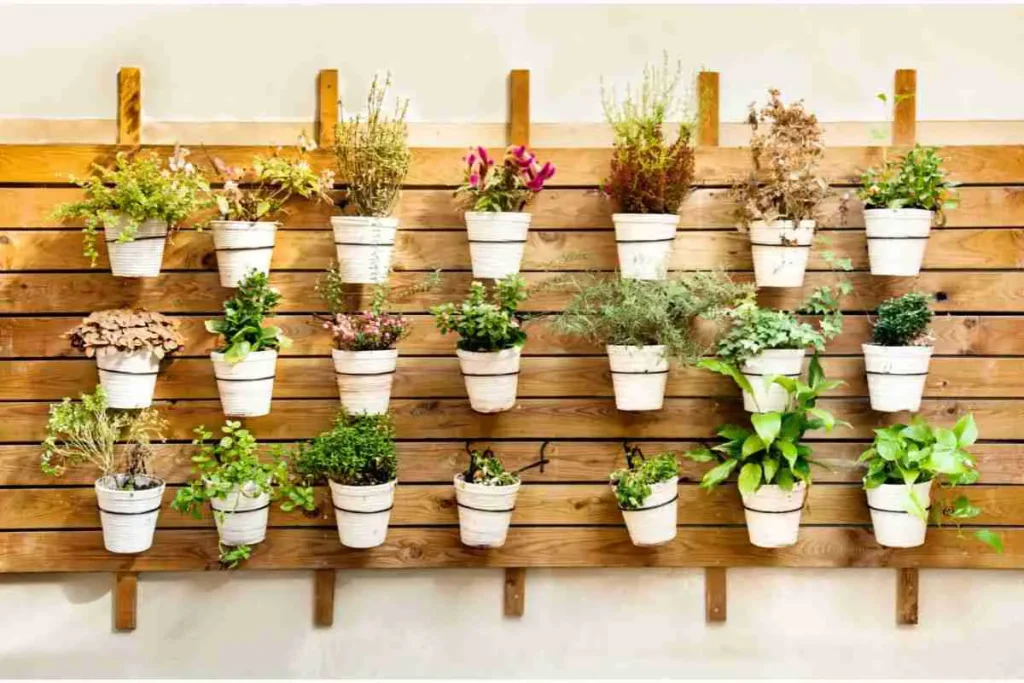
This image is property of indoorhomegarden.com.
Building a DIY Vertical Herb Garden
Choosing the Right Vertical Garden Design
When building a DIY vertical herb garden, it is essential to choose a design that suits your available space, aesthetic preferences, and the specific herbs you plan to grow. There are numerous vertical garden designs to choose from, including stacked pallet gardens, hanging gardens, or vertical wall planters. Consider the size and weight limitations of your chosen location and the materials you have available before finalizing the design.
Preparing the Support Structure
Before installing the containers or planters, prepare the support structure for your vertical herb garden. This may involve attaching wall brackets, securing trellises or hooks, or creating a framework for your hanging garden. Ensure that the support structure is stable and capable of holding the weight of the containers and plants. If necessary, secure the structure to the wall or ground to prevent any instability or accidents.
Arranging the Containers
Once the support structure is in place, it is time to arrange the containers or planters. Depending on the design you have chosen, this may involve stacking the containers vertically, mounting them on a framework, or hanging them individually. Take care to position the containers at appropriate heights to ensure proper growth and access to sunlight for each herb plant. Consider playing with different arrangements to create an aesthetically pleasing display.
Planting the Herbs
With the containers arranged, it’s time to plant the herbs in your vertical garden. Start by filling each container with well-draining potting soil, leaving enough space for the plants’ root balls. Gently remove the herbs from their nursery containers, being careful not to damage the roots, and place them in the prepared containers. Firm the soil around each plant to provide stability and ensure good root-to-soil contact.
Maintaining Proper Drainage
Proper drainage is crucial for the success of your vertical herb garden. Without adequate drainage, excess water can accumulate in the containers, potentially leading to root rot or other fungal diseases. Ensure that each container has sufficient drainage holes to allow excess water to escape. Additionally, consider placing a layer of gravel or small rocks at the bottom of the containers to further enhance drainage.
Providing Adequate Watering
Once your vertical herb garden is planted, it is important to provide adequate watering to promote healthy growth. Pay close attention to the moisture levels of the potting soil and adjust your watering schedule accordingly. As a general rule, herbs prefer evenly moist soil but can suffer from root rot if overwatered. Check the soil moisture regularly and water only when the top inch of soil feels dry to the touch. Be mindful not to overwater or underwater, as this can negatively impact the health of your herb plants.
Maintaining Your Vertical Herb Garden
Regular Pruning and Harvesting
Maintaining a vertical herb garden includes regular pruning and harvesting of the herbs. Pruning helps to promote bushier and more compact growth, prevents legginess, and encourages the production of fresh leaves. Use clean and sharp pruners or scissors to remove any damaged, dead, or overgrown parts of the herb plants. Additionally, harvest herbs regularly to encourage continuous growth and ensure the best flavor and aroma in your dishes.
Monitoring Soil Moisture
Regularly monitoring the moisture levels of the potting soil is essential for the health of your herb plants. Overly dry soil can cause stress and hinder growth, while excessively wet soil can lead to root rot and other fungal diseases. Use your finger or a moisture meter to check the soil moisture regularly and adjust your watering schedule accordingly. Remember to water deeply to encourage healthy root development but avoid waterlogging the soil.
Fertilizing and Nutrient Balance
While herbs generally do not require excessive fertilization, they can benefit from occasional feeding with organic fertilizer or compost. Follow the recommended application rates and frequency specified on the fertilizer package to prevent nutrient imbalances. Overfertilizing can lead to excessive leafy growth but compromise the flavor and aroma of the herbs. Strike a balance by providing your herb plants with the nutrients they need while maintaining their desired qualities.
Pest and Disease Management
Although vertical herb gardens are generally less prone to pests and diseases, it is still important to remain vigilant and take proactive measures to prevent and manage potential issues. Regularly inspect your herb plants for any signs of pests, such as aphids or spider mites, and promptly address any infestations. Additionally, monitor your plants for common diseases, such as powdery mildew or fungal infections, and take appropriate action, such as pruning affected parts or applying organic plant-based treatments.
Seasonal Care and Overwintering
Different herbs have varying requirements when it comes to seasonal care and overwintering. Some herbs, such as rosemary and thyme, are perennial and can survive winter in many climates. However, others, like basil or lemon balm, are annuals that need to be replanted each year. Research the specific needs of each herb in your vertical garden and take appropriate steps to protect them during harsh weather conditions or prepare for their seasonal dormancy.
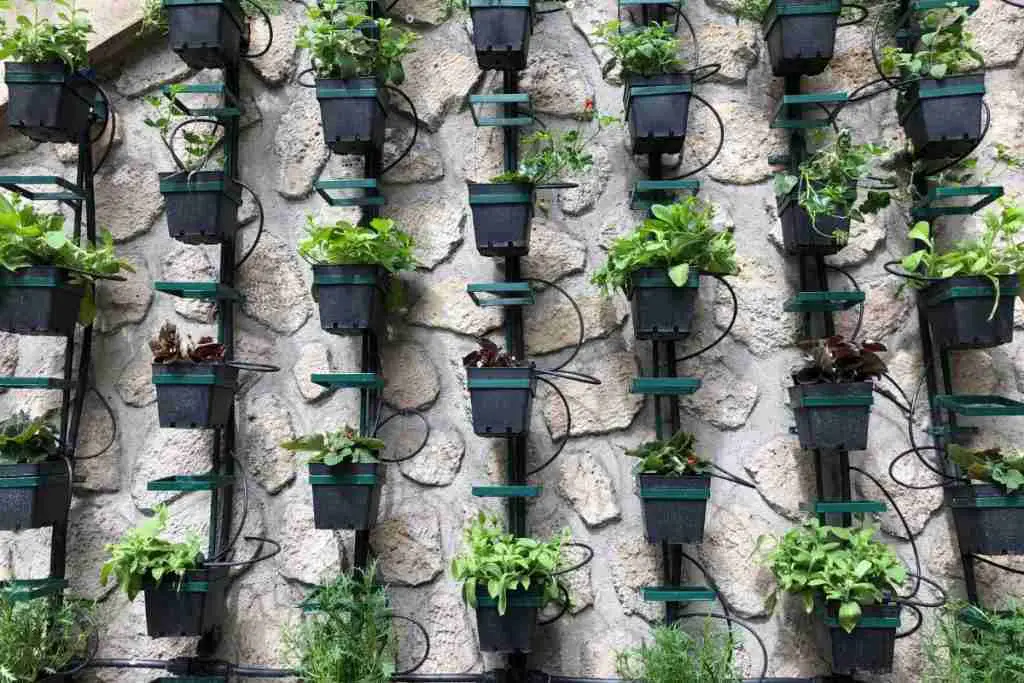
This image is property of indoorhomegarden.com.
Harvesting and Using Fresh Herbs
Proper Harvesting Techniques
To maximize the flavor and longevity of your fresh herbs, it is important to employ proper harvesting techniques. Most herbs can be harvested by snipping off the desired portion of the plant just above a pair of leaves or nodes. Avoid removing more than one-third of the plant at a time to ensure continued growth and productivity. Harvest in the morning when the essential oils in the herbs are at their peak, and wash and pat dry the harvested herbs before use.
Preserving Herbs for Longer Shelf Life
To extend the shelf life of your harvested herbs, consider preserving them through various methods. Drying herbs is a common technique that allows you to enjoy their flavors and aromas throughout the year. Hang the herbs in small bundles upside down in a well-ventilated area away from direct sunlight. Once dried, store them in airtight containers in a cool and dark place. Alternatively, you can freeze herbs by chopping them, placing them in ice cube trays with a little water, and freezing until solid. Transfer the herbal ice cubes to freezer bags for easy and convenient use in your culinary creations.
Culinary Uses and Recipes
The culinary uses for fresh herbs are virtually endless. Whether it’s adding a sprig of rosemary to your roasted potatoes, infusing basil into a homemade pasta sauce, or garnishing a cocktail with a sprig of mint, fresh herbs can elevate the flavors of your dishes to new heights. Experiment with different combinations of herbs to create unique flavor profiles and explore the plethora of culinary recipes available online or in cookbooks that showcase the versatility of fresh herbs.
Medicinal Applications and Remedies
Aside from their culinary uses, many herbs have medicinal properties that have been recognized for centuries. From soothing chamomile tea to aromatherapy with lavender essential oil, herbs can be harnessed to promote physical and mental well-being. Research the various medicinal properties of the herbs in your vertical garden and explore their potential applications. Keep in mind that while herbs can offer numerous health benefits, it is important to consult with a healthcare professional before using them for medicinal purposes.
Common Mistakes to Avoid
Overcrowding the Plants
One common mistake in vertical herb gardening is overcrowding the plants. It can be tempting to fit as many herbs as possible into a small space, but this can lead to poor airflow, increased competition for nutrients, and a higher risk of diseases. Allow sufficient space between the herbs to promote healthy growth and minimize the risk of overcrowding.
Neglecting Adequate Sunlight
Another mistake to avoid is neglecting adequate sunlight for your herbs. Most herbs require at least six hours of direct sunlight per day to thrive. Insufficient sunlight can result in leggy or weak growth and decreased productivity. Ensure that your vertical herb garden is positioned in a location that receives adequate sunlight or consider using supplemental grow lights to provide the necessary light for your herbs.
Improper Drainage
Proper drainage is crucial for the health of your herbs. Without adequate drainage, excess water can accumulate in the containers and lead to root rot or fungal diseases. Ensure that each container has sufficient drainage holes and consider incorporating a layer of gravel or small rocks at the bottom to enhance drainage. Regularly check the drainage of your containers and make adjustments as needed.
Inadequate Pruning and Harvesting
Regular pruning and harvesting are essential for the health and productivity of your herb plants. Neglecting to prune or harvest regularly can result in leggy growth, reduced flavor and aroma, and decreased overall plant vitality. Make it a habit to inspect your herb plants regularly and trim or harvest as needed to promote bushier growth and maintain the desired qualities of the herbs.
Overwatering or Underwatering
Finding the right balance of watering can be challenging in any garden, including a vertical herb garden. Overwatering can lead to waterlogged roots, root rot, and other fungal infections, while underwatering can cause stress and hinder growth. Monitor the moisture levels of the potting soil regularly and water only when the top inch feels dry to the touch. Adjust your watering schedule as needed to provide the right amount of moisture for your herb plants.
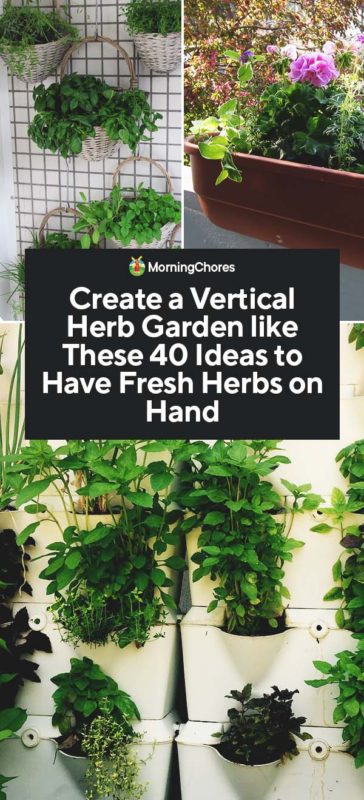
This image is property of morningchores.com.
Inspiration and Design Ideas
Vertical Herb Gardens in Small Apartments
If you live in a small apartment, a vertical herb garden can be a great way to bring the beauty and freshness of herbs into your living space. Consider installing a vertical wall planter in your kitchen or mounting a small set of hanging containers near a sunny window. Not only will this provide you with easy access to fresh herbs for your culinary creations, but it will also add a touch of natural beauty to your apartment.
Vertical Gardens for Outdoor Spaces
Outdoor spaces, such as balconies, patios, or gardens, offer ample opportunities for creating stunning vertical herb gardens. Explore different vertical garden designs, such as stacked pallet gardens or tiered hanging containers, to maximize your growing space. Consider incorporating additional decorative elements, such as trellises, to create a visually appealing vertical garden that enhances the overall aesthetics of your outdoor area.
Hanging Herb Gardens
Hanging herb gardens can add a unique touch to any space, whether indoors or outdoors. Hang small pots or containers from a sturdy support structure, such as a pergola or overhead beams, and let the herbs cascade downwards. This design not only creates a stunning visual effect but also allows easy access to the herbs for harvesting and maintenance. Hanging herb gardens are particularly suitable for areas with limited floor space.
Living Walls with Herb Varieties
Living walls, also known as green walls or vertical gardens, can be created by using a variety of plants, including herbs. Vertical herb gardens can transform an ordinary wall into a lush and vibrant backdrop. Choose herbs with cascading growth habits, such as thyme or oregano, and combine them with other ornamental plants to create a living work of art. Living walls are becoming increasingly popular in both indoor and outdoor settings and can be customized to suit any style or design preference.
Conclusion
By creating a vertical herb garden, you can enjoy the benefits of fresh herbs right at your fingertips. Whether you are looking to utilize small spaces effectively, enhance the visual appeal of your living space, save time and money, or reduce pests and diseases, a vertical herb garden is a practical and rewarding solution. By choosing the right location, selecting the best herbs, gathering the necessary materials and tools, and following proper construction and maintenance techniques, you can create a thriving vertical garden that provides you with an abundant supply of fresh herbs for culinary and medicinal uses. So, why not take the leap and explore the creative possibilities of a vertical herb garden? Start now and enjoy the flavorful and aromatic rewards that come with it.

